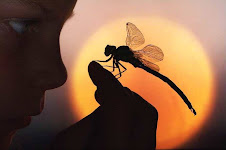#5 The endocrine system (p.666-671)
1.-How does the endocrine system control body processes?
2.- What are the endocrine gland?
3.- how does negative feedback control hormone levels?
4.-Copy de figure 2 (page 669) and explain the functions of the hormones it produces
Key terms:
Endocrine gland
Hormone
Target cell
Hypothalamus
Pituitary gland
Negative feedback
#6 The male and female reproductive system (p.674-681)
1.- What is sexual reproduction?
2.- What are the structures and functions of the male and female reproductive systems?
3.- What events occur during the menstrual cycle?
Key terms:
Egg
Sperm
Fertilization
Zygote
Testis
Testosterone
Scrotum
Semen
Penis
Ovary
Estrogen
Fallopian tube
Menstrual cycle
Ovulation
Menstruation
#7 The human life cycle (p.682-690)
1.- What are the stages of human development that occur before birth?
2.-How is the developing embryo protected and nourished?
3.-What happens during childbirth?
4.-What changes occur from infancy to adulthood?
Key terms:
Embryo
Fetus
Amniotic sac
Placenta
Umbilical cord
Adolescence
Puberty
#8 Living things and environment (p.704-708)
1.- what needs are met by an organism´s environment?
2.- What are the two parts of an organism´s habitat with which it interacts?
3.- What are the levels of organization within an ecosystem?
4.- inspired in the figure 4 (page 709) make a example of ecological organization since a smallest level of organization (an organism).
Key terms:
Organism
Habitat
Biotic factor
Photosynthesis
Species
Population
Community
Ecosystem
Ecology
#9 Studying population (p.711-718)
1.- How do ecologist determine the size of a population?
2.-What causes population to change in size?
3.- What factors limit population growth?
4.- what is he meant by the term population density?
Key terms:
Estimate
Birth rate
Death rate
Immigration
Emigration
Population density
Limiting factor
Carrying capacity
#10 Interactions among living things (p.722-729)
1.- How do an organism´s adaptations help it to survive?
2.- What are the major ways in which organisms in an ecosystem interact?
3.-What ate the three types of symbiotic relationships?
4.- Copy in the figure 16 (page 727 “Defense strategies”) the false coloring, protective covering and camouflage and explain.
Key terms:
Natural selection
Adaptations
Niche
Competition
Predation
Predator
Prey
Symbiosis
Mutualism
Commensalism
Parasitism
Parasite
Host
#11 Change in communities (p. 730-733)
1.-How do primary and secondary successions differ?
2.-What are some pioneer species?
Key terms.-
Successions
Primary successions
Pioneer species
Secondary successions
#12 Energy flow in ecosystem (p.740-745)
1.- What energy roles do organisms play in an ecosystem?
2.-How does energy move though an ecosystem?
3.-How much energy is available at each level of an energy pyramid?
4.- Make a food web with producers, consumers and decomposers.
Key terms.-
Producers
Consumers
Decomposers
Carnivore
Omnivore
Scavenger
Food chain
Food web
Energy pyramid
#13 Cycles of metter (p.746-751)
1. What processes are involved in the water cycle?
2. How are carbon and oxygen recycled in ecosystems?
3. What is the nitrogen cycle?
4. How do human activities affect the carbon and oxygen cycle?
Key terms.-
Water cycle
Evaporation
Condensation
Precipitation
Nitrogen fixation
#14 Biogeography (p752-755)
1. How has the movement of the continents affected the distribution of species?
2. What are three ways that dispersal of organisms occurs?
3. What factors can limit the dispersal of a species?
Key terms.-
Biogeography
Continental drift
Dispersal
Exotic species
Climate
#15 Biomes and aquatic ecosystems (p.758-769)
1. What are the six major biomes found on earth?
2. What factors determine the type of biome found in an area?
3. What do freshwater and marine ecosystems include?
Key terms.-
Biome
Canopy
Understory
Desert
Grassland
Savanna
Deciduous tree
Tundra
Permafrost
Estuary
Intertidal zone
Neritic zone
#16 Environmental issues (p.778-788)
1. What are the general categories of environmental issues?
2. How do decision makers balance different needs and concerns?
3. What are the factors that can cause pollution?
4. Resume the timeline (p.780-781)
Key terms.-
Natural resource
Renewable resource
Nonrenewable resource
Pollution
Environmental science
#17 Forests and fisheries (p.784-788)
1. How can forests be managed as renewable resources?
2. how can fisheries by managed for a sustainable yield?
Key terms.-
Clear-cutting
Selective cutting
Sustainable yield
Fishery
Aquaculture
#18 biodiversity (p.792-801)
1. In what ways is biodiversity valuable?
2. what factors affect an area´s biodiversity?
3. which human activities threaten biodiversity?
4. How can biodiversity be protected?
Key terms.-
Biodiversity
Keystone species
Extinction
Endangered species
Threatened species
Habitat destruction
Habitat fragmentation
Poaching
Captive breeding
Suscribirse a:
Enviar comentarios (Atom)

No hay comentarios:
Publicar un comentario